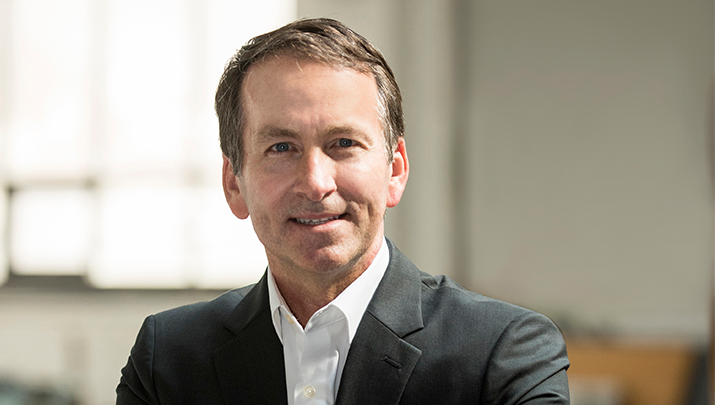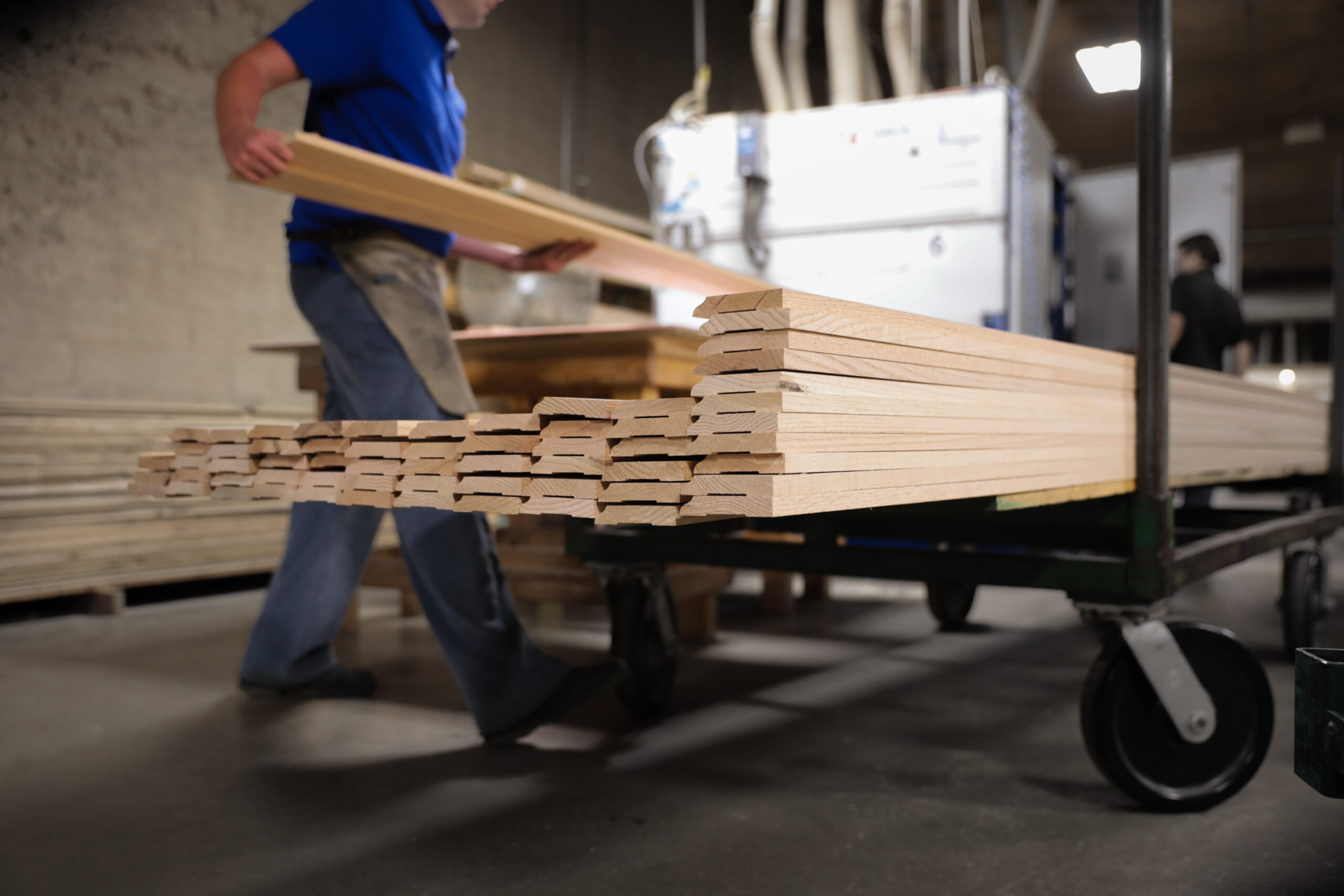

From Rural Kentucky Poverty to Chief Executive
- Aric M. Andrew
- Luckett & Farley
As a child, I never imagined that one day I would be the president and CEO of the largest architecture, engineering and interior design firm in Kentucky. I grew up poor on a tobacco and dairy farm in rural Kentucky. It was land given to my French ancestors for their military service in the Revolutionary War, but that makes it sound more glamorous than it was. The reality of life on the farm was that times were tough. As my grandfather used to say, “We were land rich but money poor.” Due to some unique family challenges and the declining agricultural economy of the 1970s, we were essentially living as sharecroppers on our own land. We lived in a tenant house on the farm that my mother fixed up. Despite having no plumbing in the house until I started school, she did her very best to make our little farm house a home.
Food was scarce, and there was certainly no extra money for clothes and toys. But here’s the thing — we were happy. That’s the way it is with poverty sometimes. You often don’t know what you don’t have. We worked incredibly hard in the tobacco fields but we didn’t know anything different; that’s just the way it was. We worked together as a family, including all five of my siblings. My father worked harder than anyone I have ever known. To this day he has a sense of peace that can only come from a hard day’s work. He instilled in me a work ethic that has served me well throughout my life, but that would also haunt me as I struggled later to find a work-life balance.
But for now, the hard work was paying off. After the tobacco crop was harvested, my brothers and sisters and I would pick up the discarded leaves in the field and on the barn floor and sell them. This gave us a little extra money that we would share. Early on we would pool our money to buy something together, like a family motorcycle, or save the money individually to buy a first car or add to a small college fund. We all excelled in school, both in academics and extracurricular activities. My parents didn’t have the opportunity to attend college, but there was never any doubt that we would. They emphasized that family, hard work, love and education were the keys to our success in life.
In 1980, I entered the College of Design School of Architecture at the University of Kentucky. As a child, I was artistic and creative, the resident artist at home and at school. Always sketching or painting; school murals and stage sets. Coupled with my love for the land and nature, I found beauty in the rural outbuildings and was fascinated with construction and fixing farm machinery. I would later come to understand that my early passions reflected the fusion of art and science that is architecture. I can still remember the dappled sunlight filtering through the slats of our tobacco barn and thinking that this was the most beautiful place on earth.
While I watched my college classmates navigate through the architecture program, I had to take my time. In order to afford college, I had to work several jobs, which meant I didn’t have as much time for classes. As it turned out, five of the six siblings in my family were attending UK at the same time. Once again, we all took care of each other as we made our way through college. It took me seven years to get through a five-year program (which earned me a professional degree: bachelor of architecture), but it was worth it. At one of those jobs, at a local pizza parlor, I met the woman who would later become my wife and the mother of my children. By the time I graduated in 1987 with several design awards, I was married with a bouncing baby girl.
When I landed my first job at an architecture firm, I thought my hardest days were behind me. But I was wrong. My first boss, who was a fine man and a good architect, was not the kind of mentor I needed. I was young, talented and ambitious, and he was more than happy to give me all the opportunity I could handle — and then some.
He gave me a tremendous amount of responsibility, which I eagerly accepted. It was an exhilarating but ultimately exhausting combination. I was helping manage the office, running projects and getting some amazing opportunities to contribute my design skills toward things like designing a church (St. Margaret Mary in Louisville), but at a time when I wasn’t fully prepared for that level of responsibility. My passion for design was driving me. To compensate, I worked 70-hour weeks. Then, on the weekends, if I wasn’t in the office I was often back on the farm helping my parents.
My work ethic had always helped me succeed in the past but in this case — it turned on me. I had little time for my growing family; we now had three children. On the farm, family was everything as we worked together but now, work was taking me away from them. I was torn between wanting to be successful and a good provider versus the thing that was most important to me: time with my family. My children would say I was a great father back then, but at the time, the work was taking a toll on my marriage and we were struggling. After 15 years with the same firm (intern to vice president), I realized I had to make some serious changes.
My first move was to find a new job. I wanted to be with a firm that was larger and more established, where I wouldn’t have to wear so many different hats. I found that in Luckett & Farley, a 160-year-old architecture and engineering firm in Louisville. There I had access to many great people with new and different ideas about work and life. I became close to the vice president for business development, Belinda Gates. Belinda was the kind of person who made you feel good about yourself. Everyone liked her and she was good at building relationships and creating winning work. She encouraged me to follow my passion for design, and together we brought a lot of work into the office as I began to grow our higher-education market.
My work-life balance was improving, but it was too late to save my marriage. While going through a divorce, I asked the leadership at L&F to allow me to take a hiatus from the firm. I had been offered a job rebuilding the middle and high school campuses in our local school district. The time away allowed me to spend much-needed time with my children (who attended school on the same campus) and build a closer bond than we ever had before. When the projects and the divorce were finished, Luckett & Farley welcomed me back as the market director for higher education. I would later become a vice president and ultimately a senior VP to help lead the firm.
Earlier this year, I took over as president and CEO and surrounded myself with a leadership team that shares the same values. When I sat down to think about the way we wanted to lead the firm, I reached back to the principles I learned on the farm: hard work, yes, but living a life with Purpose, having Perseverance and being family- and People First-focused is the most important. I realized that Evergreen principles have always guided me.
So now I’m working hard to keep those principles in place, not just for the good of our employees but for the good of our firm. We try to lead by example. When we work, we work hard; in fact, “we kill it!” But when the day is over, I turn out the lights and head home at a reasonable hour and (when I can) I turn off my cell phone on weekends. We make sure that our employees know we are working for something bigger than just money. We want to be client-focused and employee-centered — that’s our sustainable business model. We’re planning on Luckett & Farley being around for at least another 160 years.
When I can, I still go back to the farm to help my father (who is a sprightly 77) and brother set up their garden in the spring. The tobacco barn that once stirred me to think about architecture is no longer there. Instead of focusing everything on my work, I take the time to enjoy my family and the beauty around me. These days I find great comfort in the simplicity and peace of where I started.
Aric M. Andrew is the President and CEO of Luckett & Farley
More Articles and Videos

Both/And Thinking: Harnessing the Positive Potential of Tensions
- Marianne Lewis
- Carl L. Linder College of Business, University of Cincinnati

Leading Through Uncertainty – Tugboat Institute® Summit 2025
- Jackie Hawkins
- Tugboat Institute

Get Evergreen insight and wisdom delivered to your inbox every week
By signing up, you understand and agree that we will store, process and manage your personal information according to our Privacy Policy




